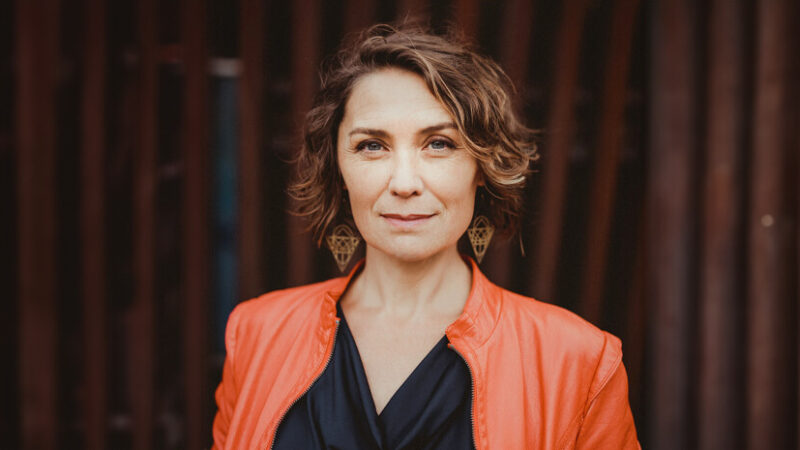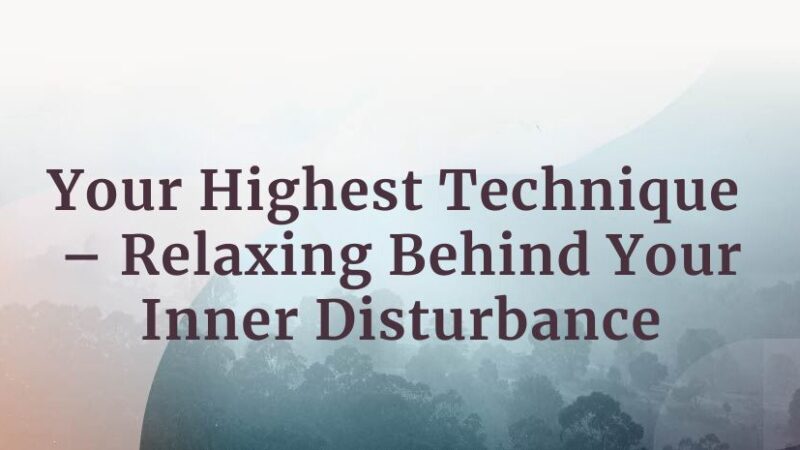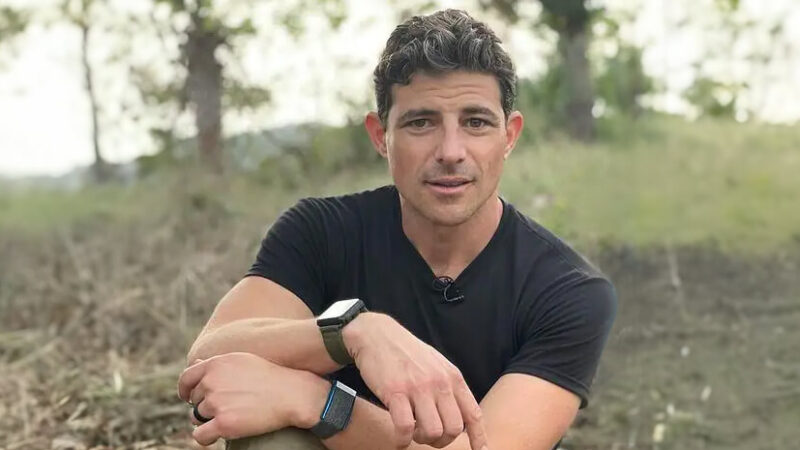-
E90: How to Stop Minding and Start Living
Michael Singer — June 29, 2025
“Do you mind?” We “mind” everything, from traffic to childhood memories, and this habitual...
-
Caroline Myss: From the Love of Power to the Power of Love
Caroline Myss — June 24, 2025
Few luminaries in modern times have opened the doors to the spiritual dimensions of who we are, why...
-
Honey Tasting Meditation: Build Your Relationship with Sweetness
There is a saying that goes “hurt people hurt people.” I believe this to be true. We have been...
Written by:
Amy Burtaine, Michelle Cassandra Johnson
-
Many Voices, One Journey
The Sounds True Blog
Insights, reflections, and practices from Sounds True teachers, authors, staff, and more. Have a look—to find some inspiration and wisdom for uplifting your day.
Standing Together, and Stepping Up
Written By:
Tami Simon -
The Michael Singer Podcast
Your Highest Intention: Self-Realization
Michael Singer discusses intention—"perhaps the deepest thing we can talk about"—and the path to self-realization.
This Week:
E89: Freedom from Preference: The Evolution of Caring -
Many Voices, One Journey
The Sounds True Blog
Insights, reflections, and practices from Sounds True teachers, authors, staff, and more. Have a look—to find some inspiration and wisdom for uplifting your day.
Take Your Inner Child on Playdates
Written By:
Megan Sherer
600 Podcasts and Counting...
Subscribe to Insights at the Edge to hear all of Tami's interviews (transcripts available, too!), featuring Eckhart Tolle, Caroline Myss, Tara Brach, Jack Kornfield, Adyashanti, and many more.
Most Recent
Megan Devine: Acknowledging Our Grief and Carrying Wha...
When we suffer a serious loss, we come face-to-face with the fragile nature of this world. Yet in today’s culture, we often try to avoid or deny the deep emotions associated with losing the people and things we love. In this podcast, Tami Simon speaks with therapist and grief consultant Megan Devine about her uniquely helpful books with Sounds True, It’s OK That You’re Not OK and How to Carry What Can’t Be Fixed.
Tune in for a much-needed conversation on the best ways to tend one another’s pain during periods of loss, as Tami and Megan discuss: the cover-up narrative that “bad things help us grow”; the roots of today’s grief phobia; pain vs suffering; grief without a story; the healing power of acknowledgment; tolerating feelings of helplessness; the impulse to fix things; the weaponization of acceptance; time and the notion of complicated grief; the dangers of pathologizing grief; the lost opportunity to reframe grief during the pandemic; naming the awkward instead of silencing yourself; offering concrete assistance rather than an open offer to help; three kinds of hope: transactional, functional, and inhabitable; speaking our truth and allowing others the same; and more.
Note: This episode originally aired on Sounds True One, where these special episodes of Insights at the Edge are available to watch live on video and with exclusive access to Q&As with our guests. Learn more at join.soundstrue.com.
S3 E1: Your Highest Technique – Relaxing Behind Your...
In this season opener, Michael Singer guides us into the understanding and practice of what he calls “the highest technique,” that of relaxing in the midst of your resistance to life’s events—and then fully experiencing the present moment.
For more information, go to michaelsingerpodcast.com.
© Sounds True Inc. Episodes: © 2024 Michael A. Singer. All Rights Reserved.
Matt Gutman: Conquering a Lifetime of Panic Attacks
28% of Americans will experience a panic attack in their lifetime. Some researchers say that number is closer to 50%. Renowned ABC News correspondent, Matt Gutman, never felt afraid when assigned to active and dangerous war zones. Yet when he had to speak on live television in front of a viewership of 9 million people, the seemingly unflappable reporter suffered intense panic attacks that nearly cost him his job. To help anyone whose life has been impacted by this often misunderstood mental health challenge, Gutman shares his personal journey in No Time to Panic.
In this podcast, Tami Simon speaks with Gutman about the book and the hard-won insights he brings his readers, exploring: The importance of destigmatizing panic attack disorder; conventional and alternative healing modalities; “retiring the drill sergeant” (aka managing the inner critic); excavating unresolved grief; how panic disorder can metastasize into other psychological issues; physical threats vs. social threats (and how we tolerate them); the evolutionary purpose of anxiety; how vulnerability is often the first step toward healing; the paradox of welcoming your panic; psychedelics and ego transcendence; the power of mindfulness and meditation; and more.
Note: This episode originally aired on Sounds True One, where these special episodes of Insights at the Edge are available to watch live on video and with exclusive access to Q&As with our guests. Learn more at join.soundstrue.com.
Customer Favorites
Caroline Myss: The Shadow Course, Part 2
Caroline Myss is a bestselling author, medical intuitive, and leading voice in the fields of energy medicine, human potential, and spiritual exploration. Together with author Andrew Harvey, Caroline has partnered with Sounds True to create The Shadow Course: An Eight-Week Journey to Know Yourself and Bring Light to the World. In this episode of Insights at the Edge, Tami Simon speaks with Caroline about this upcoming online course and how it guides participants in a deep exploration of the aspects of themselves that they have disowned or denied. They discuss the ways that Shadow issues such as greed, entitlement, envy, and self-absorption show up in everyday life and can even manifest as symptoms of physical illness. Finally, Caroline explains how bringing awareness to our personal Shadows is the first step in initiating deeply needed social changes for our world. (72 minutes)
How to Bring Your Fear Out of Your Shadow
 If you’re looking for genuine transformation, you need look no further than your fear. For in it there exists not only an abundance of trapped energy, but also the very testing and challenge that we need in order to live a deeper, more authentic life.
If you’re looking for genuine transformation, you need look no further than your fear. For in it there exists not only an abundance of trapped energy, but also the very testing and challenge that we need in order to live a deeper, more authentic life.
The dragon’s cave awaits. However shadowed it may be, you know where it is, and you can see it more clearly as you move toward it, step by conscious step, bringing the fearful you into your heart, with your adrenaline not so much fueling your fear as your courage and investigative excitement.
The following guide can help you confront the dragons of fear as you navigate through your own unique shadow.
Get to know your fear. Study it, approach it, become more curious about it, turn on the lights. Get to know it even better. Go for an inside look at it, paying close attention to all of its qualities, static and otherwise. The more familiar you are with your fear, the less the chances are of you letting it control you.
Get to know its roots. The expression of your fear might be outside your shadow, but its origins, its foundational roots, may be in your shadow. You may, for example, begin with an obvious case of worrying and then drop below that to an anxiety that has been with you since you were young. Underlying that may be a survival-based panic that’s anchored in an even earlier time. Spelunk your depths.
Stop shaming yourself for being afraid. Everyone has fear, whether they admit it or not. The Dalai Lama has said he sometimes feels anxious. The more we shame ourselves—and are shamed—for being afraid, the more our fear will be driven into our shadow. Fear is natural, but what we do with it may not be so natural, such as when we pathologize it.
Open your heart to the frightened child in you. Develop as much compassion as possible for the fearful you. (This compassion comes from the you who is not caught in fear.) Don’t tell that child not to be afraid or that there’s nothing to be afraid of. Instead, be caring and protective enough to hold such fearfulness the same way you would a trembling infant. Remember that as a child you needed not just love but also protection. Being a good parent to your inner child will decentralize your fear so that instead of it holding you, you are holding it.
Instead of giving your fear higher walls, give it bigger pastures. Doing so expands you. This makes more room for your fear to shed some of its constrictedness and transition into excitement, allowing you more access to contexts other than that of fearfulness. Fear contracts our breathing, squeezing and gripping us, as if we’re stuck in a too-small enclosure, unpleasantly walled in. Giving our fear more room, more space, doesn’t make it worse but rather spreads out its energies, diluting its intensity and reducing the pressure.
Think of your fear as excitement in disguise. Where there’s fear, there’s excitement close by. Make a hard fist, tightly balled up, and imagine this is your fear. Then relax your hand, letting your fingers spread wide; this is your excitement, open and available. It’s the same energy, the same adrenaline, but the context has shifted dramatically. You weren’t trying to get excited; simply relaxing your fist freed up your energy. The fear initially is tightly held in the shadows; making conscious contact with it allows it to begin uncurling, to let some light in.
Keep your anger on tap. Take advantage of the fact that fear and anger are very closely related, being basically the same biochemically. Where fear contracts us, anger expands us, for better or worse. In fear we either tend to flee or freeze; we often feel paralyzed. But in anger we thrust forward, leaning into what angers us; our energies mobilize for taking strong stands. Some anger is a mask for fear, but plenty of anger is fearless fire, flaming through relational deadwood and obstacles to well-being, providing a torch that can illuminate even the darkest corners of our shadow.
Separate the content of your fear from its energy. When fear gets into our mind, we spin out storylines that can keep us in dark places internally, thought-cages packed with fearful ideas and expectations. When this happens, don’t think about your fear. Instead, bring your awareness as fully as possible to your body. Sense where in your body the energy of fear is strongest, taking note of the sensations there and their detailing. Stay with this body awareness, sensing instead of thinking, until you feel more stability. Soften your belly and chest, feeling how your breathing moves your entire torso, keeping some awareness on the arrival and departure of each breath.
Practice courage. Courage doesn’t mean we’re fearless but that we’re going ahead regardless of whatever fear we’re feeling. Start with small acts of courage, doing things that are a bit scary, a bit daunting. This could mean having a cold shower when you’re feeling overly sluggish, or saying no to a lunch date with a friend who you know you’ll find draining to be around today. Honor your everyday courage; sometimes getting out of bed asks more from us than does parachuting from a plane.
As you practice courage, more and more of your fearfulness will shift into resolve and action. Some of it may remain, keeping you on your toes. And some of it may morph into the kind of anger that helps fuel needed stands. Remember that practicing courage helps immensely in facing and entering your shadow.
Excerpted from Bringing Your Shadow Out of the Dark: Breaking Free from the Hidden Forces That Drive You by Robert Augustus Masters.

 Robert Augustus Masters, PhD, is an integral psychotherapist, relationship expert, and spiritual teacher whose work blends the psychological and physical with the spiritual, emphasizing embodiment, emotional literacy, and the development of relational maturity. He is the author of thirteen books, including Transformation through Intimacy and Spiritual Bypassing. For more information, visit robertmasters.com.
Robert Augustus Masters, PhD, is an integral psychotherapist, relationship expert, and spiritual teacher whose work blends the psychological and physical with the spiritual, emphasizing embodiment, emotional literacy, and the development of relational maturity. He is the author of thirteen books, including Transformation through Intimacy and Spiritual Bypassing. For more information, visit robertmasters.com.
Buy your copy of Bringing Your Shadow Out of the Dark at your favorite bookseller!
Sounds True | Amazon | Barnes & Noble | Indiebound

Stephen Cope: Finding Your True Calling
Stephen Cope is the scholar emeritus at Kripalu Yoga Center and the director of the Kripalu Institute for Extraordinary Living, as well as the bestselling author of The Wisdom of Yoga and The Great Work of Your Life. With Sounds True, Stephen has produced an eight-week online course titled Your True Calling: Essential Teachings of Yoga to Find Your Path in the World. In this episode of Insights at the Edge, Tami Simon speaks with Stephen about discovering and living out your dharma—the true purpose of your life. They discuss the wisdom found in the Bhagavad Gita and the many ways this ancient parable can be applied to modern life. Stephen explains why “missing by an inch is the same as missing by a mile,” as well as why we need to decide what not to do in order to bring our gifts to life. Finally, Tami and Stephen talk about the concept of being a warrior and what this means as we bring our unique skills to bear in a world that needs them more than ever. (67 minutes)




